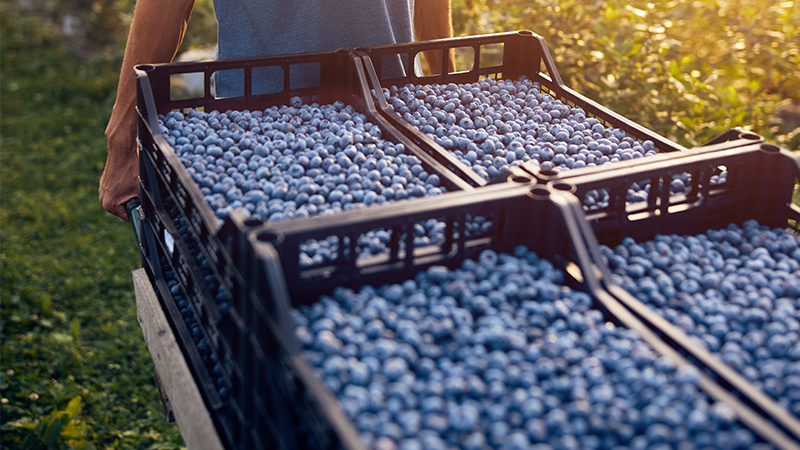Cracks In Your Orchard’s Infrastructure Expose Bigger Flaws

James R. McFerson
Infrastructure. Not the most exciting topic, but it has actually emerged as a relatively exciting issue in this mostly dreadful presidential campaign. It certainly offers something more engaging than the endless, lightweight, and ill-mannered candidate badinage, even though none has presented much more than a sound bite or two about what they might really do.
Of course, “crumbling” seems to be the required adjective when referring to our country’s bridges, roads, power grid, communications, etc. And “crumbling infrastructure” must be quickly linked with righteous assertions that all other candidates and their political parties have been entirely negligent for years. As if any legislation would have made it through recent Congressional sessions, regardless of its anti-crumbling intent.
Addressing Labor Shortages
Sadly, and similar to immigration reform, there seems virtually no hope of any meaningful discussion on national infrastructure in this campaign. Further, a comprehensive political solution for either seems impossibly distant. However, while awaiting some movement at the national level, the Pacific Northwest tree fruit industry is tending to some of its key infrastructure challenges, which are directly related to our workforce issues.
Before the quantity, quality, and seasonal availability of orchard employees reached the current and very threatening state, producers had been steadily renovating their blocks and establishing new plantings, with full intent to increase orchard productivity per acre while making the workplace safer, more efficient, and attractive to an increasingly smaller employee base — one of the few ways that producers can address labor shortages.
They have been doing this using the best genetics and the best production management systems. That means the best dwarfing, precocity-inducing rootstocks along with reliably high-yielding scions and highly intensive horticultural management. Their success has been astounding. Acceptable annual yields in apple and sweet cherry have doubled in the past 10 years, and many expect them to increase by 50% as more recent plantings come into full production. Packing sheds have been enlarged or built anew, with the necessary high-throughput capacity to handle the ever-larger harvests.
When Your Foundation Is Shaky
This is where the crumbling infrastructure issue hits home. While packing shed expansion and upgrading appears to be adequate to deal with fruit volume (and rapidly-growing food safety concerns), many/most of our orchards are simply not set up for such drastic increases in production.
We may be able to renovate an established block to double its yield, get it picked, and handle it postharvest, but troubling failures in orchard infrastructure are beginning to raise alarms.
Establishing an apple orchard these days can easily top $40,000 per acre. One of the principal reasons for that escalating figure is the infrastructure (posts, wire, anchors, overhead netting) required to support the trees and especially, that increased crop load.
However, in the past couple seasons, it has become clear that many blocks suffer from inadequate engineering design and a mixed quality of building materials. Further, the need for regular inspection and maintenance has not always been recognized.
Add a couple serious windstorms in blocks where overhead cooling or excessive irrigation has softened the soil, and a grower has a real mess. It is not easy to get specific figures, but we do know that many rows of trellis have hit the ground with millions of dollars of fruit not making it to the packing shed. The embarrassment when neighbors see the mess is no fun, but losing a crop at harvest time is a financial disaster.
Recognizing the need for some focused engineering research, the Washington Tree Fruit Research Commission recently funded a project led by Mark DeKleine, a private sector engineer with a Ph.D. in biosystems engineering from Washington State University. Collaborating with Karen Lewis, who is leading the Washington Tree Fruit Extension Team, Mark will develop a robust inventory of the extent and type of trellis failures, analyze the options, and develop a set of guidelines to mitigate the grower’s risk.
Research Infrastructure Hurting
Another related area where analysis and investment might help is the dire condition of the orchards and facilities used by our research and Extension community to develop, evaluate, and demonstrate practices improving our crop production and protection practices — innovations we must have to sustainably obtain our desired yields.
As state governments decrease their funding of land grant university activities, the personnel, equipment, and supplies essential to properly manage research orchards have been shrinking beyond the danger point. Our pipeline for science-based innovation is rusting out.
Thankfully, stakeholders in Michigan, Oregon, and Washington have stepped up to directly enhance their land grant universities’ infrastructure for tree fruit research and Extension. In a recent, exciting initiative, the newly formed Michigan Tree Fruit Commission assesses growers and then directs these dollars to Michigan State University’s (MSU) four fruit stations. Even better, they were able to leverage considerable support from their state government and are partnering with MSU to see these investments are focused on priority issues.
In Oregon, growers in the Mid-Columbia region have cooperated to provide funding directly to their Oregon State University Research & Extension Center. More than five years ago, the Washington industry committed to a $6 million endowment fund to provide operational support in perpetuity for Research & Extension Centers in Prosser and Wenatchee.
Rather than pontificating, these foresighted stakeholders took a straightforward approach, assessed their needs, and put their money to work. Maybe the current crop of presidential candidates could start addressing our nation’s crumbling infrastructure similarly.










